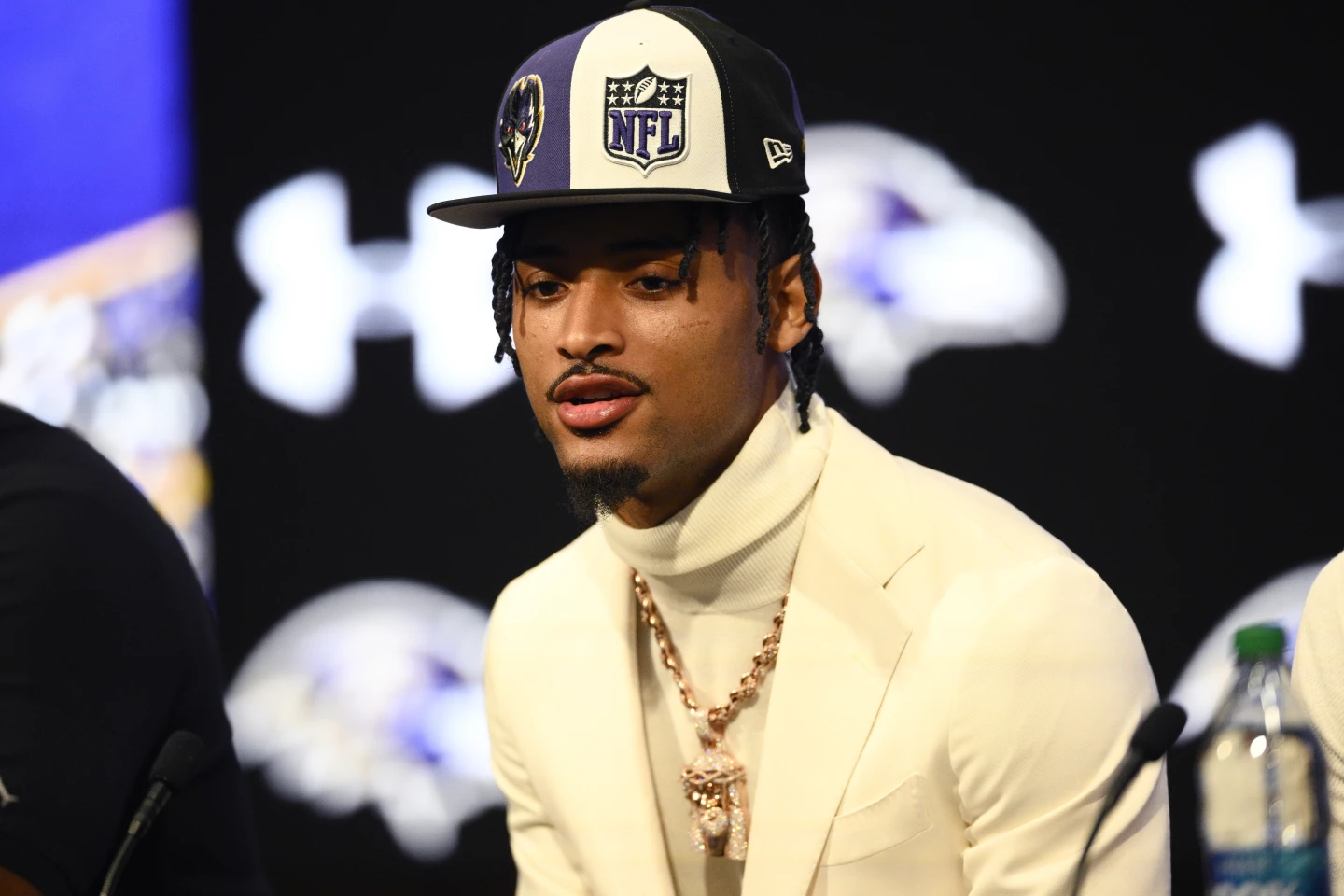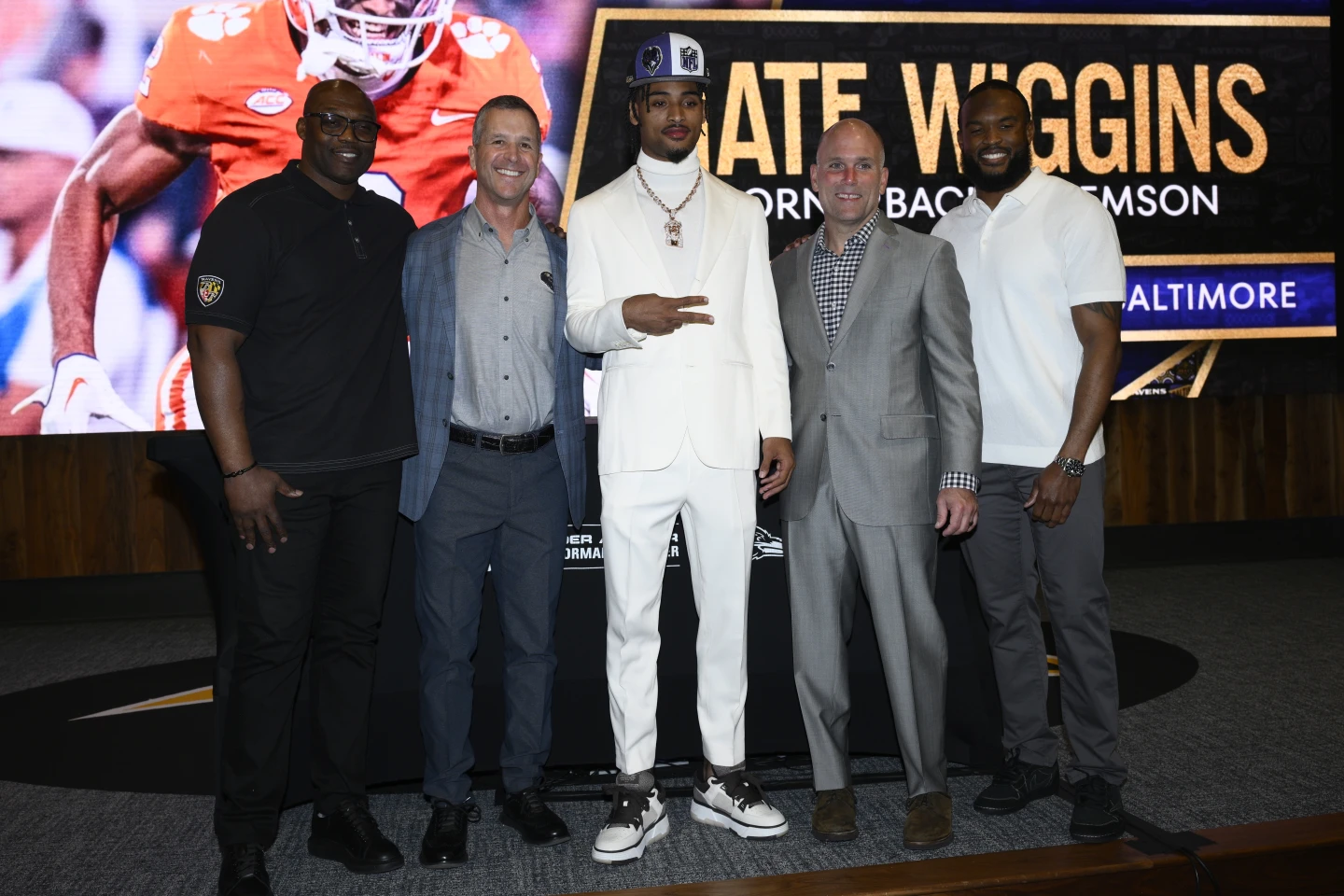Eric DeCosta believed that the Baltimore Ravens made wise choices with their initial two draft selections, opting for a cornerback and an offensive tackle. DeCosta, the general manager of Baltimore, remarked, “It appears that this draft is characterized by a trend.”
He highlighted the prominence of quarterbacks in the first round, followed by a surge in cornerbacks towards the end of the first round and into the second round, and a subsequent rise in offensive linemen towards the end of the second round and into the third.
Baltimore entered the draft seeking reinforcement for the offensive line, which experienced the departure of three starters, and depth in the secondary.
The Ravens’ draft selections effectively addressed several gaps in the team. Following the acquisitions of Wiggins and Rosengarten, they proceeded to select Adisa Isaac, an edge rusher from Penn State, in the third round, Devontez Walker, a wide receiver from North Carolina, and T.J. Tampa, a cornerback from Iowa State, in the fourth round, and Rasheen Ali, a running back from Marshall, in the fifth round.

Baltimore was at the forefront of these surges. They secured cornerback Nate Wiggins from Clemson towards the end of the first round, preceding the selection of four consecutive cornerbacks early in the second round.
Subsequently, Baltimore picked tackle Roger Rosengarten from Washington late in the second round, initiating a phase during which ten offensive linemen were chosen within a span of twenty picks.
Both Wiggins and Rosengarten addressed critical needs for the Ravens, who faced significant departures during the offseason. Free agents Kevin Zeitler and John Simpson departed from the guard positions, while Morgan Moses was traded.
Additionally, linebacker Patrick Queen and pass rusher Jadeveon Clowney, alongside running backs Gus Edwards and J.K. Dobbins, were lost in free agency.
